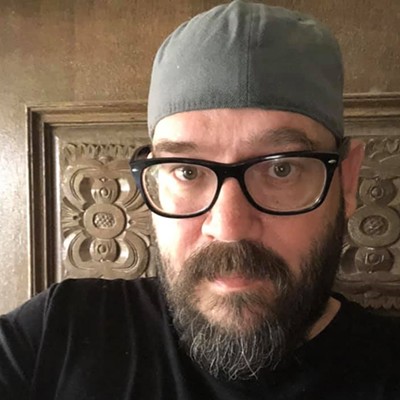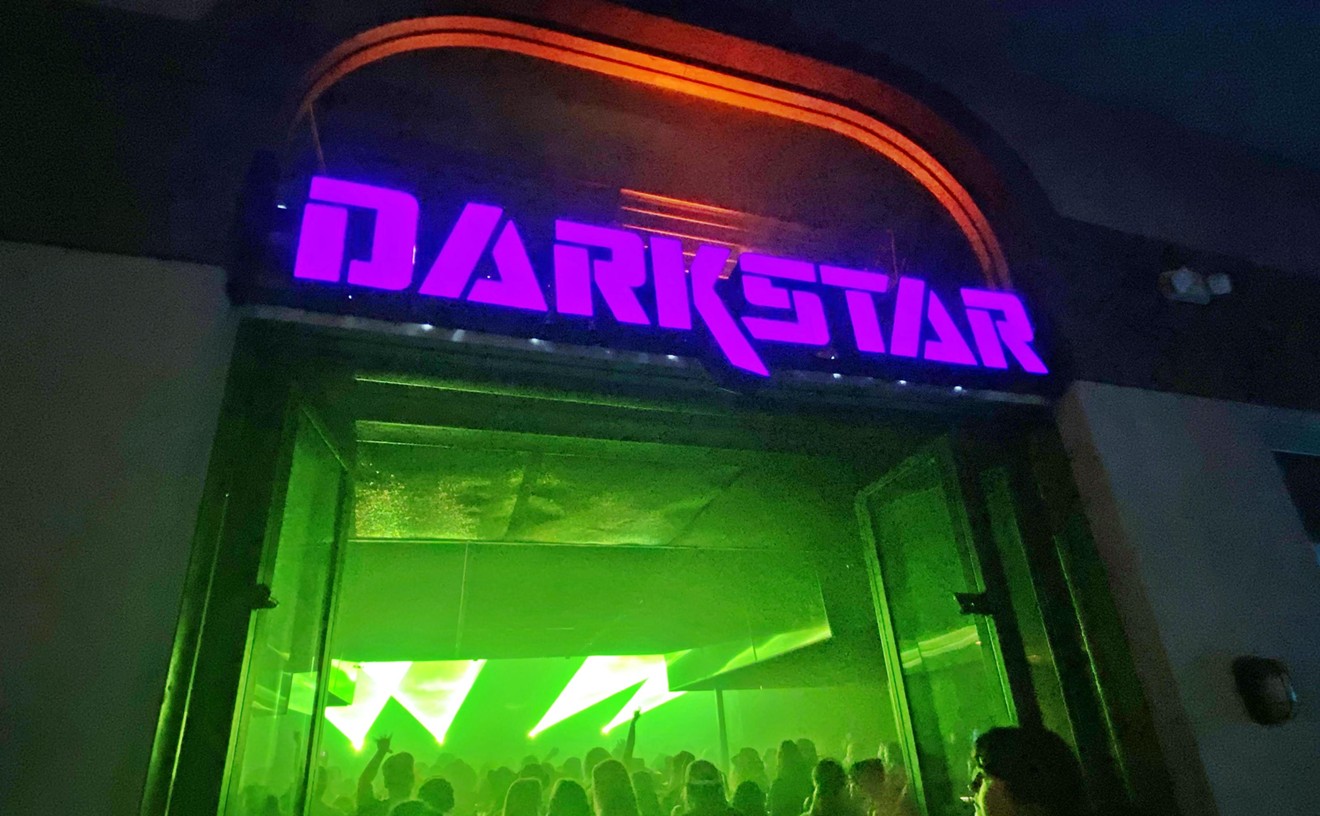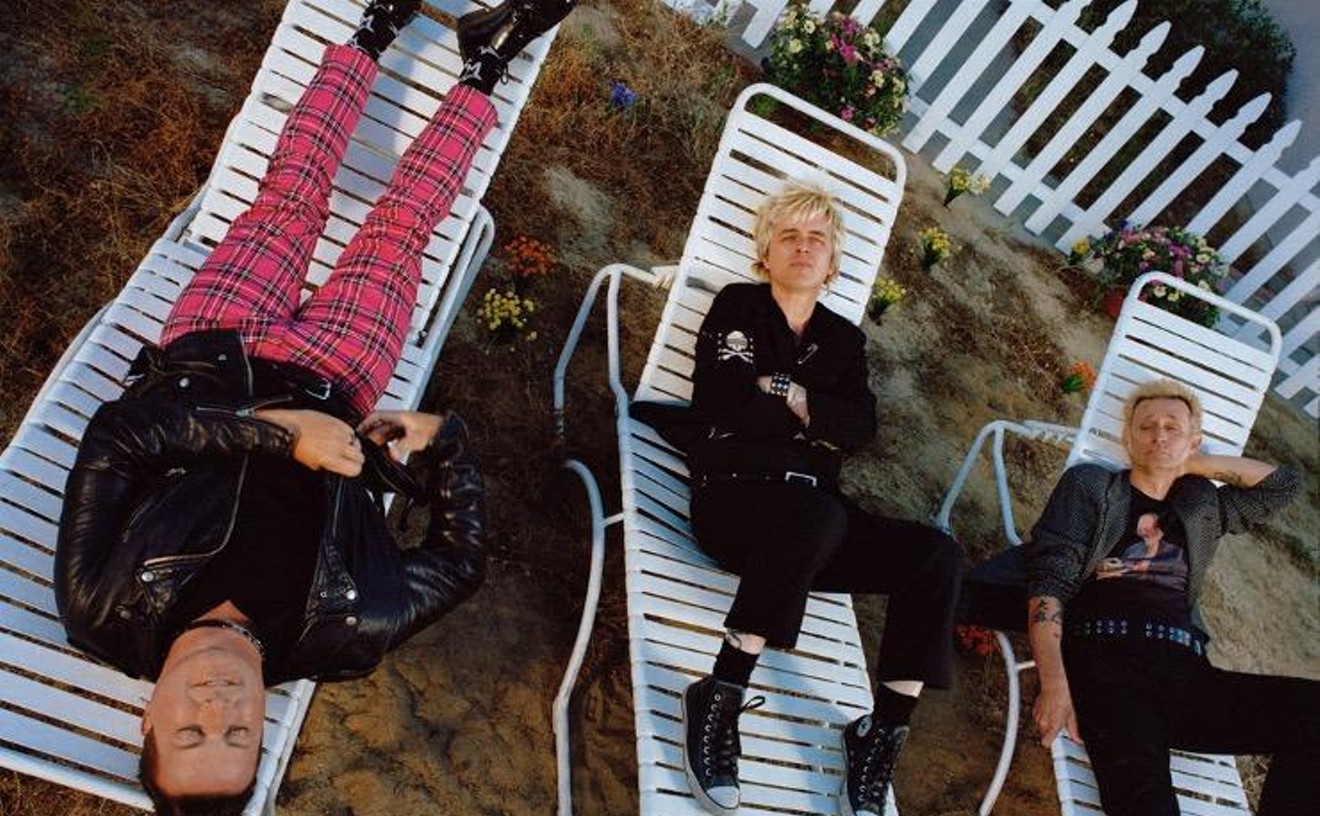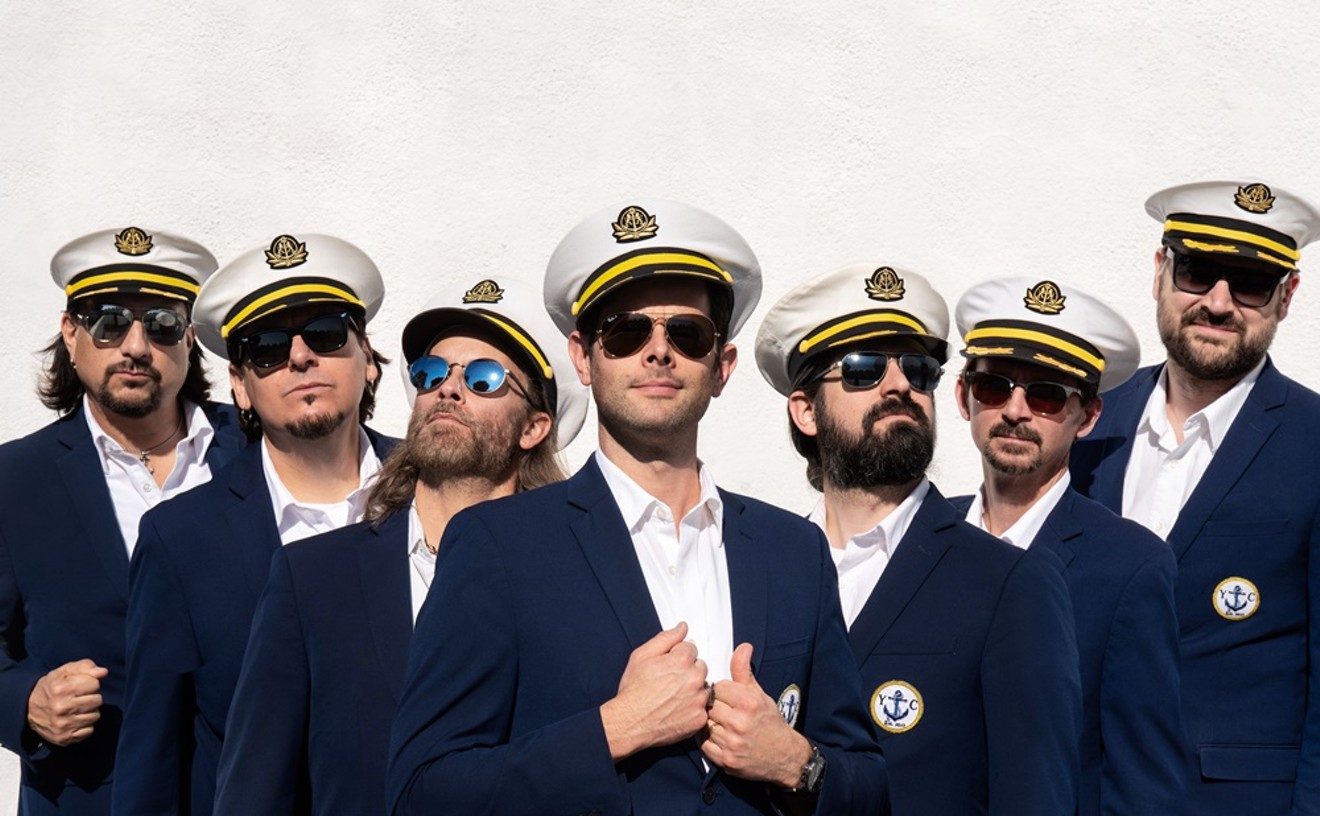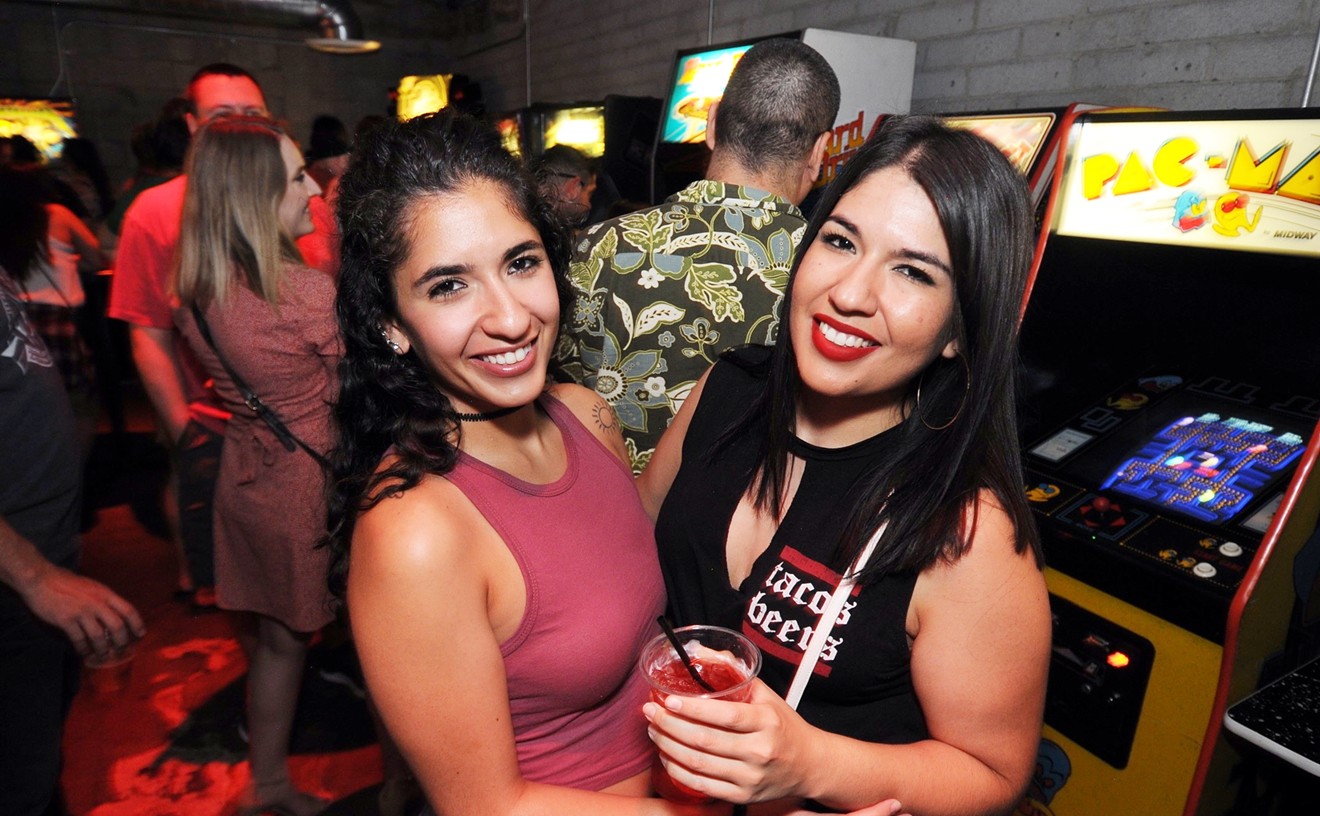It’s an ordinary afternoon and Bob Corritore is doing what he does best: talking about the blues.
Sitting at a desk inside his Scottsdale residence, the renowned harmonica player and blues guru flips through a file drawer filled with two-and-a-half decades of flyers and gig posters from the Rhythm Room, the iconic Phoenix concert venue he’s owned and operated for the past 25 years.
This voluminous trove of local music history is organized alphabetically, and Corritore is going through the collection while sharing anecdotes and stories about each artist. Currently, he’s on the Bs and has already come across flyers featuring such blues legends as Rory Block, The Boneshakers, and Clarence “Gatemouth” Brown. Next up is the late George “Mojo” Buford, the Mississippi-born harmonica player and longtime cohort of Muddy Waters.
“We did a live record at the Rhythm Room with Mojo Buford and Bob Margolin,” Corritore says. “It was called Champagne and Reefer, and what was cool about it is that Mojo Buford is the one who got Bob his gig in the Muddy Waters band when Sammy Lawhorn left.”
These blues factoids are a small sample of Corritore’s encyclopedic knowledge of the genre, which he utilizes frequently during his weekly KJZZ radio show, Those Lowdown Blues. It also illustrates his lifelong passion for the genre and its history, as does his ownership of the Rhythm Room, which has become a live music institution during the past 25 years.
Since its debut in September 1991, the venue has hosted a “who’s who” of both local and nationally known blues and roots artists. Ask Corritore about some of the many musicians who’ve performed there and he can rattle off an exhaustive list of such legends as Bo Diddley, R.L. Burnside, Billy Lee Riley, Jessie Mae Hemphill, Janiva Magness, and hundreds more. Naturally, renowned Phoenix blues artists have gigged here as well, including the Hoodoo Kings, Hans Olson, Sistah Blue, and the late Chico Chism (a beloved fixture at the Rhythm Room until his passing in 2007).
While the Rhythm Room has become a cornerstone of the Phoenix blues scene, it has also played host to influential bands and performers from other genres, including indie rock and folk. In fact, long before venues like Crescent Ballroom or Rebel Lounge became go-to spots for such concerts, fans were flocking to the Rhythm Room to see artists like Of Montreal, Yeasayer, or Jessica Lea Mayfield.
Literally thousands of great shows that have gone down at the Rhythm Room over the past 25 years — and each has a story involved, which Corritore and some of the musicians and regulars who have frequented the venue were happy to share with New Times for the following oral history of the Rhythm Room.
(Note: Some quotes have been condensed and edited for brevity and clarity.)
Bob Corritore, current Rhythm Room owner: I’d played around town as a musician for years and years after moving to Phoenix in 1981 and had my radio show going. I was kind of at a crossroads by 1991, thinking, “What am I doing here?” Doing 200-plus gigs on a local/regional level was probably not the best way to advance a career. Phoenix is a great market, but I was thinking there must be something more. And then, out of the blue, I get a call from this guy Lenny Frankel.
Lenny Frankel, former Rhythm Room owner: I owned the property at 1019 East Indian School, and it was the Purple Turtle for many, many years [in the ’70s and ’80s].
Corritore: I was very familiar with the property because I used to play there with Louisiana Red and Tommy Dukes and Janiva Magness when it was the Purple Turtle. It’d changed a few times and wasn’t a music venue at the time.
Frankel: I had been renting it out to different people. It was a blue-collar bar and that failed, then a couple of gals made it a lesbian bar and that failed. And then the building was empty again. The blues was big then, and having been to Char’s [Has the Blues] and seen the line around the block, I said, “You know, I’ll make it a blues club.” And by coincidence, I picked up the newspaper and guess whose name was in there? Bob Corritore’s. So I called information and they had a number for Bob. It was serendipity.
Corritore: Lenny wanted someone to help him develop a blues club there and recruited me to be that guy. And I met with him and he seemed serious, and the next thing you know, we had a venue.
Frankel: I knew a guy who was going to manage it and he came down, too, and the three of us sat there and hatched the Rhythm Room, just like that. Bob booked it, the other guy managed it, and I owned it.
Corritore: Lenny came up with the name. We were all trying to figure out a bunch of different ones that all seemed to fall short and he just came up with, “Rhythm Room.” Once he said it, everybody just stopped and went, “That's the name.” It implies blues but didn't necessarily have to go there. It was just a very musical name and felt like it fit.
Mario Moreno, guitarist, Hoodoo Kings: The blues scene was really thriving at that time and there were a lot of bands around, so it was a lot of fun in those days. And the Rhythm Room became the new thing in town.
Corritore: We opened up on September 18, 1991, with Big Pete Pearson, Phoenix’s king of the blues, rightfully so. That was on a Wednesday. Second night, we had Junior Watson and his great left-coast band, and then over that weekend, we had the great Chico Chism, who was Howlin’ Wolf’s last drummer and relocated to Phoenix in 1986. So those were our first days. It was a blues and roots club that was being booked from a musician’s perspective, and it seemed like it really had a great acceptance in this town.
Moreno: We were one of the first local bands to play there. Within the Phoenix area, you had three or four blues clubs going at the same time and all of ’em would be packed on the weekends.
Bill Tarsha, harmonica player, Rocket 88s: At the time, we were the house band at Warsaw Wally’s down the street. And we played the Rhythm Room as much as we could, and right from the get-go it was a place where blues bands really felt welcome.
Hans Olson, Valley blues legend: I played the Rhythm Room the first month it opened and was there every Sunday for a while. It was cool to have another real blues club.
Corritore: Hans is one of the saints of the Rhythm Room, and he was right there in the beginning. And before we actually had a house PA, there were times he would lend us his if we needed it. That’s how cool Hans is.
Olson: It pretty much has looked the same over the years, just this big square room with great sound. Clarke Rigsby, a recording studio engineer, designed the stage and there’s a few legends about it. I heard there’s 14 tons of sand in that stage, which is great because there’s no overtones.
Corritore: It was a little bigger than most of the blues clubs, so it was a little more concert-friendly for some of the touring acts. It definitely wasn’t a fancy place. At the same time, it was a room that had great sound, great sightlines, and great acoustics.
Olson: What I liked about it was there were no TVs, because TVs became the bane of nightclubs. You'd think when people go out they'd watch the bands, but they don't, they watch the TVs. So the fact that [Rhythm Room] had no TVs was the first thing I noticed and I said, "I love this place."
Tarsha: The Rhythm Room wasn't a focal point of the scene right away but it rapidly started becoming that, especially with all the great musicians coming through.
Frankel: Sunday were just packed. And we used to give out t-shirts and some other stuff to the first 500 people. And I guess some of those t-shirts are probably collectible items now.
Corritore: Chico took great pride in the Rhythm Room and was really our ambassador. Every time a band came in from out of town, they all knew Chico and he was there to greet him. And when Chico and I were traveling to Chicago or elsewhere, Chico always asked musicians, “When you gonna play my club?” I wasn't going to dispute that. It was Chico's club.
Olson: In the beginning, Bob was doing all the booking and [setting] the direction of the thing.
Corritore: I remember bringing R.L. Burnside in like 1992 to the club for the first time. And he was met with a small audience and we kept bringing him back. And then, of course, the R.L. Burnside phenomenon happened and that whole fat possum sound was really big but we were already very good friends with him, so we'd fly him out to do weekends maybe two or three times a year for 12 or 15 years until his health didn't permit that.
So we'd have him two nights in a row and both would be completely packed out and he would get into his Mississippi hill country trance blues and by the time you got done with that weekend after hearing him two nights in a row, you'd be hearing that in your mind and feeling that trance for a whole week afterwards. It was beautiful.
Tarsha: I remember doing gigs guys like Nappy Brown and Big Jay McNeely. Those were all great shows.
Corritore: I’ll always be fond of the times I brought in all these blues legends. When we opened up the Rhythm Room, Chico and I became the cornerstone of the Rhythm Room All-Stars, a band that was designed to back up the various blues artists that might stop in. I have great memories of being onstage with Jimmy Rogers, Luther Tucker, John Brim, Pinetop Perkins, and Henry Gray. There are some things that you have to pinch yourself to even believe they’re real.
Janiva Magness, blues singer: The Rhythm Room has become a very well known blues venue and stopping place for bands to work and play while on tour.
Corritore: When [David] "Honeyboy" Edwards came to the club, it was like he was bringing us all to the Mississippi Delta. The blues was so thick it felt like it was just hanging in the air and you could actually probably slice it with a knife. Honeyboy had that beautiful quality of doing that.
Olson: He started bringing in all these national acts, bands you wouldn’t expect to be in such an intimate place, like Leon Russell and Dave Mason.
Corritore: By 1994, we were really coming into our own and [became] the stop for everybody going to and from the west coast. Guitar Shorty, Candye Kane, The Loved Ones, John Hammond, Charlie Musselwhite, just all these great concerts happened and packed the place a regular basis.
Tarsha: A lot of guys we did gigs with that have passed away since were still with us then, traveling around, coming to the Rhythm Room to perform and we were able to play with them.
Corritore: I'd do these showcases in the middle of the week. Sometimes I'd do one called "Gentlemen and the Blues" with Duke Draper and "Chief" Schabuttie Gilliame and Bob Tate and Big Pete Pearson. These would be these ridiculous Wednesday nights and everybody would enjoy the party. We did one called "All Women Super Blues Band," because we had so many great female blues artists and made big revue of all that. And when they were rehearsing for the night, they go this is kind of good thing here, and the next thing you know they form a band called Sistah Blue. This was Rochelle Raya and Lila Sherman and they had a great run.
Olson: Bob’s done a lot of live recordings there and they all sound great.
Corritore: The title track of R.L. Burnside's "Come On In" was recorded live at the Rhythm Room. And that was his best-selling record. Kim Wilson recorded a Grammy-nominated record live at the Rhythm Room, Smoking Joint. And then Robert Lockwood, Jr., the stepson of Robert Johnson, did his last record at the Rhythm Room in a solo performance and was very proud of it. There are some pretty amazing records that are part of our legacy.
Mona Watkins, former Rhythm Room manager: When I started in 1996 as a waitress, it was mostly blues, but we used to do rockabilly on Tuesdays and the rest of the days were pretty much blues and roots.
Corritore: We also had great acts that were maybe a little more roots than blues, like Southern Culture on the Skids. We brought them in for years and years. We were always expanding the number of national acts while still being a refuge for all the great Phoenix-based acts. I think people just enjoyed going out more then. It was really some of the glory days.
Those days didn’t last. In 2001, a number of changes happened at the Rhythm Room, including Corritore purchasing the property from Frankel. Months later, 9/11 happened.
Corritore: After September 11, people were not going out as much, and that changed the game for all the venues in town. That was really a turning point for the whole nightlife of Phoenix, which was coupled with more stringent DUI laws, which changed a lot of people’s habits.
Watkins: We did face some significant challenges after September 11th.
Corritore: At that point, nothing that I booked was going to work. But I realized that and I saw some changes that were happening and I realized I had to expand my scope of music. It seemed like the logical business strategy. Enter people like Stateside [Presents] and Psyko Steve [Chilton].
Charlie Levy, owner, Stateside Presents: I just went to Bob one day and said, “Can I start bringing shows to the Rhythm Room that aren’t strictly blues and roots music?” which at the time, that’s mostly what they did. And Bob’s such a nice guy and said yes.
Watkins: I think that definitely helped us, because it was becoming hard to do so much blues. It got to the point where doing blues five nights a week, the fans kind of thinned out. So with Charlie bringing in other kinds of shows during the week. We were able to condense our blues fans to Fridays and Saturdays and the occasional weekdays, while the rest of the week it was a mix of everything. We did singer-songwriter stuff, folk, indie … kind of a mix of everything, even ’80s hair bands.
Levy: It was the best place in Phoenix to see a show, and Bob let us bring a lot of the bands that are now super-popular. I remember seeing Mumford and Sons there and Ratatat there. There was an Of Montreal show that was probably one of the funnest shows I’d ever seen. We did a King Khan and the Shrines show that was great.
Corritore: There was a long run before Stateside opened up the Crescent where we were one of its mainstays. And they booked all sorts of wonderful acts that weren’t really on my radar, and it created a thing where a lot of different demographics came into the room that weren’t just blues and roots people.
Meredith Moore, vocalist, the Sugar Thieves: Bob wants to keep the integrity of having a blues club, so he really does a great job of hand-selecting musicians for Friday and Saturday shows so that the people that come out regularly every weekend for dance and listen to the blues are getting a good show.
Magness: I always like to work and for me as an artist the best thing about a venue – any venue, including the Rhythm Room – is the audience that attends shows is there for the music and really into the music and supportive of the artists that play there.
Levy: There have been some true legends that’ve played the Rhythm Room. Phoenix is lucky to have that place. It is a true music venue that has brought in legends throughout the years.
Moore: It's a place that folks know about from all over the U.S. They do a really do good job of getting good groups through the Valley that would otherwise just skip us. A lot of these folks are on their way to L.A. or Vegas and the Rhythm Room has been the main reason why bands come through Phoenix and play for us. That’s part of its legacy.
Magness: It’s hard to keep doors open and many places have not survived the fluctuating economy. Bob has managed to stay the course and that is a very strong statement. Very good indeed.
Corritore: I'm turning 60 this year and I realize at some point I'm going to need to think about retirement. The problem is, I can't imagine my life without the hustle-bustle of the Rhythm Room. I get so much pleasure from it. I enjoy playing at the Rhythm Room, I enjoy going to shows at the Rhythm Room, I enjoy being able to offer artists that I like a place to play. I enjoy having it as a social structure. I enjoy everything so much that its very tough to imagine life after the Rhythm Room.
At some point I'm going to feel a need to slow down I would imagine. Maybe not. In a perfect world, there'd be a successor for me that I would be able to nurture and they'd keep the vision alive of what I've done for the first 25 years. It’d be different because whoever’s at the helm will steer it in the direction they see fit, but it'd be nice to see it continue on. I'd hate to think that somebody would succeed me and turn it into a sports bar.
The Rhythm Room’s 25th Anniversary Celebration takes place on Friday, September 30, and Saturday, October 1.
[
{
"name": "Air - MediumRectangle - Inline Content - Mobile Display Size",
"component": "18478561",
"insertPoint": "2",
"requiredCountToDisplay": "2"
},{
"name": "Editor Picks",
"component": "16759093",
"insertPoint": "4",
"requiredCountToDisplay": "1"
},{
"name": "Inline Links",
"component": "17980324",
"insertPoint": "8th",
"startingPoint": 8,
"requiredCountToDisplay": "7",
"maxInsertions": 25
},{
"name": "Air - MediumRectangle - Combo - Inline Content",
"component": "16759092",
"insertPoint": "8th",
"startingPoint": 8,
"requiredCountToDisplay": "7",
"maxInsertions": 25
},{
"name": "Inline Links",
"component": "17980324",
"insertPoint": "8th",
"startingPoint": 12,
"requiredCountToDisplay": "11",
"maxInsertions": 24
},{
"name": "Air - Leaderboard Tower - Combo - Inline Content",
"component": "16759094",
"insertPoint": "8th",
"startingPoint": 12,
"requiredCountToDisplay": "11",
"maxInsertions": 24
}
]


